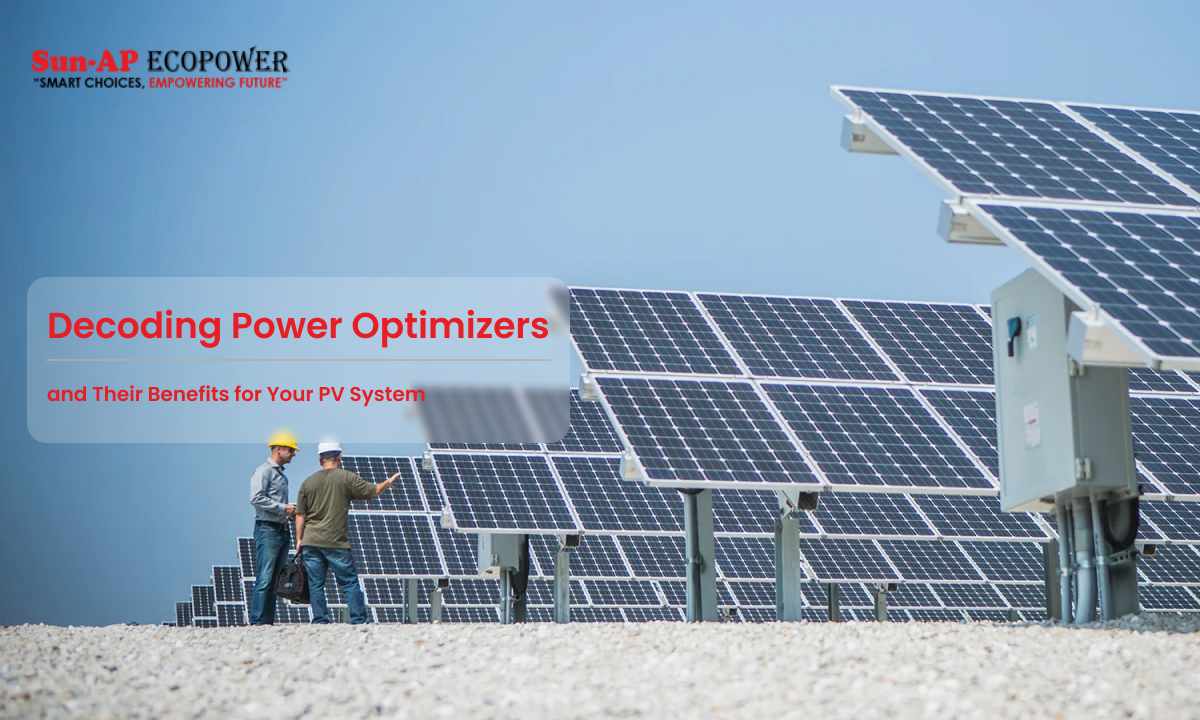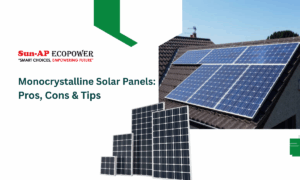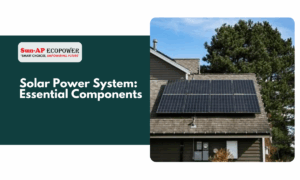As renewable energy sources gain popularity and the world seeks more sustainable alternatives, solar power has emerged as a leading player in the renewable energy landscape. Photovoltaic (PV) systems, which convert sunlight into electricity, have become a common sight on rooftops and in solar farms. One crucial component of PV systems that have seen significant advancements is power optimizers. In this blog, we will explore the concept of power optimizers, their benefits, and how they can improve the performance and efficiency of your PV system.
Understanding The Concept:
Solar panels, the heart of PV systems, transform sunlight into electricity efficiently. However, typical string inverters, which transform the direct current (DC) generated by solar panels into usable alternating current (AC), can be problematic, especially when individual panels are shaded, soiled, or have mismatched power outputs. These flaws can dramatically reduce a solar array’s overall efficiency and performance, impacting the return on investment and the system’s capacity to satisfy electricity demands.
Enter power optimizers and microinverters, two game-changing innovations that address these limits head-on. Power optimizers, which are installed at the module level and connected to each solar panel, use Maximum Power Point Tracking (MPPT) technology to optimise the output of individual panels. Power optimizers limit the impact of shade or mismatch by ensuring each panel performs at full efficiency, giving in a significant boost in energy yield and overall system performance. These optimizers also offer module-level monitoring, allowing system owners to spot underperforming or damaged panels in real-time for quick maintenance and issue resolution.
Recognising Power Optimizers:
Power optimizers are cutting-edge technologies that are fitted into PV systems to address the issues caused by mismatched panels and partial shading. PV systems have traditionally used string inverters to convert the direct current (DC) generated by solar panels into alternating current (AC) for domestic usage. When solar panels in a string are exposed to different levels of sunlight or degrade at different rates, the whole system’s efficiency suffers.
Power optimizers function as separate DC-DC converters connected to each solar panel, allowing for real-time Maximum Power Point Tracking (MPPT). MPPT guarantees that each panel runs at its ideal voltage and current, maximising energy collection even in the presence of shading or panel mismatch. These optimizers also provide module-level monitoring, allowing system administrators to quickly identify and address any issues.
Advantages of Power Optimizers
Enhanced Energy Yield: The fundamental advantage of power optimizers is their capacity to greatly increase energy yield. Power optimizers remove the negative impacts of shading and mismatched panels by ensuring each panel operates ideally, enhancing total system efficiency and energy production.
Panel-Level Monitoring: Power optimizers provide module-level monitoring, delivering real-time data on the performance of each panel. This monitoring tool enables the rapid detection of underperforming or damaged panels, easing maintenance and ensuring the system runs at top performance.
System Design Freedom: With power optimizers, solar installers have greater system design freedom. They may orient and install panels in a variety of combinations without fear of partial shade, maximising the usage of available rooftop space.
Safety: Power optimizers add an extra layer of safety by lowering the DC voltage to a safe level when the system is not actively producing electricity. This feature reduces the risk of electrical fires and increases the PV system’s overall safety.
Scalability: Power optimizers make system expansion and upgrades simple. New panels can be simply combined with existing ones, making expanding the solar array easier and more cost-effective as energy demands grow.
Increased System Lifespan: Power optimizers can lengthen the total lifespan of a PV system by optimising the performance of individual panels. Reduced component stress and proactive monitoring contribute to improved system health and longevity.
Better Return on Investment (ROI): Because of the increased energy yield and improved system performance, solar system owners can expect a faster return on investment. The extra electricity generated may result in lower electricity bills or even cash generation through feed-in tariffs or net metering programmes.
Difference Between Power Optimizers and Microinverters:
When installing solar panels, the decision between power optimizers and microinverters can have a considerable impact on the overall efficiency and performance of your photovoltaic (PV) system. Both methods seek to maximise energy output, but their approaches and system architecture differ.
The decision between power optimizers and microinverters is influenced by several aspects, including:
- System Design and Flexibility: Power optimizers maintain a string-based architecture, allowing for greater system design flexibility as compared to typical string inverters. Microinverters, on the other hand, provide even more design versatility, allowing panels to be deployed in a variety of layouts, orientations, and even in sites with partial shadowing.
- Efficiency: Microinverters have a modest advantage in terms of efficiency since they eliminate the power loss associated with DC-AC conversion in centralised string inverters. Each panel has its own inverter and runs independently, ensuring optimal performance regardless of the conditions influencing other panels.
- Monitoring and Maintenance: Monitoring and maintenance are provided by both technologies, which provide module-level monitoring and real-time performance data for each panel. Microinverters, on the other hand, can provide more detailed data down to the individual cell level, allowing for more precise problem detection and maintenance.
- Safety: Power optimizers and microinverters both improve safety when compared to typical string inverters. When the system is not actively generating electricity, power optimizers reduce the DC voltage at the module level, whereas microinverters provide a higher level of safety by eliminating the excessive DC voltage.
Conclusion
By overcoming the constraints of standard string inverters, power optimizers have transformed the way PV systems operate. Power optimizers solve shade, mismatch, and degradation concerns by optimising each panel’s performance, considerably increasing energy yield and total system efficiency. They are a vital addition to any solar project due to the benefits of improved monitoring, increased safety, and scalability.
Power optimizers pave the path for more efficient and reliable PV systems as solar technology evolves, bringing us closer to a sustainable and environmentally friendly energy future. Investing in power optimizers can be a sensible move for your PV system and the earth as a whole, whether you’re a homeowner or a business owner trying to harness the power of the sun.
Sun-AP Eco Power, a leading solar distributor, is dedicated to pushing the boundaries of solar technology, fostering research and development, and accelerating the worldwide energy revolution. Sun-AP has been a leading official distributor for brands like Panasonic, DEYE, Adani, Enphase, DEIF, Livguard, Sakthi, and more. Join Sun-AP Eco Power in the solar revolution today to take the first step towards a more sustainable future!




